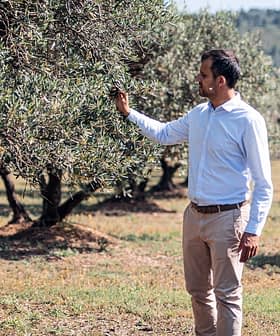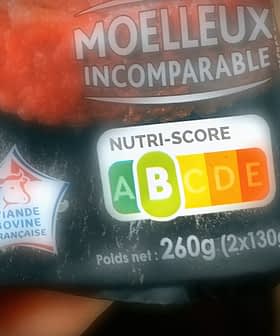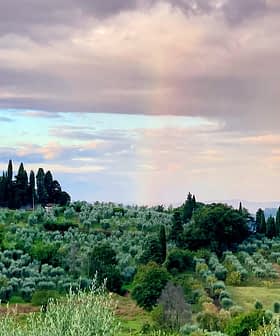Olives de Lucques
The article discusses the unique Lucques olives cultivated in Languedoc and Roussillon, prized for their large size, meaty and sweet taste, and buttery texture. The region’s olive trees are temperamental, requiring constant irrigation and careful pollination, resulting in a limited annual output of less than 250 tons, with the olives harvested for oil in the winter and for consumption in the fall.
By Rupert Parker | Reporting from London
 It’s the end of October and I’m in the South of France near the small village of Bize Minervois, on the banks of the Canal du Midi, 40 kilometres from the walled city of Carcassonne. This is the home of the olive oil Cooperative L’Oulibo. The harvest is in full swing and growers from Aude, Herault, and Pyrenees Orientale are bringing in their fruit.
It’s the end of October and I’m in the South of France near the small village of Bize Minervois, on the banks of the Canal du Midi, 40 kilometres from the walled city of Carcassonne. This is the home of the olive oil Cooperative L’Oulibo. The harvest is in full swing and growers from Aude, Herault, and Pyrenees Orientale are bringing in their fruit.
My quest is the holy grail of olives, a variety only cultivated in Languedoc and Roussillon. The locals know them as “Green Diamonds”, “Pearls of Languedoc” or “Les Rolls Royces” but they’re properly known as Olives de Lucques after the Italian Province of Lucca.
They’re large and fleshy, unlike any olive I’ve ever seen. They’ve a distinctive half moon shape with pointed tips and are an incredible shade of green. Biting into the fine outer skin I get a taste meaty and sweet, not soft, salty or mushy. The flesh comes away from the tiny stone easily and conjures up flavors of fresh almonds and avocados. It’s exceptionally buttery. I’m now beginning to understand why the French prize them so highly but wonder why they are such a well kept secret.
In the winter of 1956 disaster hit French olive groves. What is now known as the “great freeze” destroyed 95% of trees. Many mills closed and farmers turned to other crops, permanently traumatized by the experience.
Lucques olive trees are temperamental. Constant irrigation is essential and, in the height of the summer, each tree demands over 40 litres of water per day. Pollination starts at the beginning of May but lasts only 48 hours. If it rains the precious pollen will be washed away and the tree will be barren. Fortunately rainfall is low and the Mistral blowing from the north east aids fertilisation. Yet only five flowers out of a hundred will yield a fruit. For the whole region total output is less than 250 tons a year.
But, given optimal conditions, the trees are harvested by hand from September to mid October, each yielding between 15 and 50 kilos. The olives are picked when they are still green, before reaching full maturity. Every evening they are brought to the Cooperative to be sorted and measured, and at this stage they are impossible to eat, the glucosides making them incredibly bitter.
There’s an old Greek story about olives falling into a tidal pool by the sea. A passing fishwife spotted them and, much to her delight, found them perfectly edible. This was one of the world’s greatest discoveries. The Lucques olives are cured in a Sodium Hydroxide solution for about 15 hours before being rinsed in water and put into brine containing less than 5% salt and bottled. No other preservative is necessary.
The olives left on the trees turn slightly purple and blacken as they reach full maturity. From November until February they are harvested for oil, 8 kg needed for each litre. Only about 2000 litres of Lucques olive oil are produced and it is delicate and perfumed — ideal in salads or trickled over just about everything.
But for me, it’s the “Green Diamonds” which are the big stars. Outside the Cooperative, in the shade of the Olive groves, there’s an Aioli competition in full swing. It’s locals versus tourists in the battle to create the perfect mix of egg yolks, salt, garlic, lemon juice and olive oil. I’m thinking why bother? A big jar of Rolls Royce Lucques should see me comfortably through the afternoon.
If you want to finesse your Aioli skills, and taste some of the best olives in the world, then get to Bize in the third week of July for the Fete d’Olivier. You won’t be disappointed.
.
.
Rupert Parker blogs at Planet Appetite.









